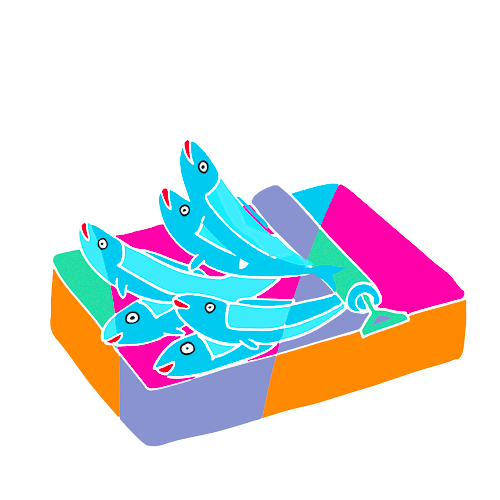Art is Useless
- Mai Ryuno
- Jun 27
- 4 min read
Updated: Aug 2
I’ve been exploring the idea that "Art is useless or unnecessary," a concept that often sparks interesting discussions. While it might initially seem true that some individuals navigate life without what we typically define as art, I believe it's worth exploring this concept more deeply.
Understanding the Concept of Art
What exactly do we mean by "art," and what does it truly signify to live a life devoid of it? To help visualize this abstract idea, I asked an AI to generate images representing "life with art" and "life without art."
AI Generated Images of Life With/Without Art
Which image do you think represents life with art, and which represents life without it?
The answer is: the image on the left represents "Life with Art," and the image on the right represents "Life with no art." But why is this the case?
Here is my interpretation: Both images feature an art medium—perhaps a framed hyperrealistic painting of flowers or a flower arrangement on the left, and photography on the right. A key difference is the presence or absence of a person, which might symbolize "life" itself. Interestingly, a cup of coffee (or tea) appeared in 50% of the AI-generated images for "(everyday) life with art."
The left image has a brighter atmosphere with a lighter blue sky and more light, while the right image has darker tones and more shadows with a vignette effect. The woman's smile in the left image adds a happy atmosphere, contrasting with the nostalgic or melancholic feeling of dried leaves and plants and the lack of personal expression in the right image.
Analyzing the Images
But is this interpretation truly accurate?
For the left image, my initial thought is that the flowers in the decorative frame represent art, and the woman represents life. However, they don't interact; her eyes are on the cup, not the flowers. This could symbolize people possessing art objects without truly engaging with them. The right image, on the other hand, might suggest life as a collection of moments and memories. Its elements are less decorative but perhaps better represent our everyday lives—we're too busy to appreciate a beautiful cup or care for nature. Perhaps the right image represents the ownership of an everyday art object, and the left represents the ownership of "life as art."
Artist's Use of Useless Art
As Oscar Wilde said, "Art is useless because its aim is simply to create a mood." Yet, art's usefulness can be viewed from various perspectives: the viewer and the maker, and its physical, intellectual, and emotional impact. He also stated, "A work of art is useless as a flower is useless. A flower blossoms for its own joy. We gain a moment of joy by looking at it. That is all that is to be said about our relations to flowers."
A viewer might discover personal emotions or meaning through art, making the experience useful for their needs. However, art can be useless if the viewer only perceives its surface mood. Wilde also noted, "Of course man may sell the flower, and so make it useful to him, but this has nothing to do with the flower. It is not part of its essence. It is accidental. It is a misuse."
Artists often excel at finding a good use for otherwise useless things; therefore, the artists can be the best audience of art. Arte Povera (Poor Art), an art movement from the 1960s-70s in Italy, also exemplifies this by using discarded or everyday materials to challenge the commercialization of art.

Art for Learning
As an artist, I create art as an experience of self-reflection, learning, and collaboration, using myself as a medium. My current project involves developing a creative learning community/microschool where students learn to think and act like artists. I believe this "uselessness" of art is particularly useful for learning, especially for this age group.
According to the World Economic Forum's Future of Jobs Survey, approximately 73% of organizations prioritize creative thinking skills, recognizing their increasing relevance and importance for the future (Wells, Forbes.com, 2024).

Creative thinking requires free and independent thought, unburdened by concerns of right or wrong outcomes. When students are allowed to think "uselessly"—without the pressure of achieving a "correct" outcome—they can think more freely and independently. This approach fosters out-of-the-box thinking and encourages big dreams.
The Importance of Imagination
Art-making begins with imagination, and at Play Full Ground, students are empowered to imagine and dream freely and independently, thereby developing their creative thinking skills. High school can be the last educational setting where students have this freedom before entering the professional world or focusing on a specific career-related field at college. I also recognize that individual freedom is often challenging to provide in larger school environments.

Dr. Shirl Buss, Creative Director at Center for Cities + Schools, UC Berkeley says:
Mai Ryuno is perfectly suited to head up a micro high school. She has a very exciting multi-media studio, equipped with tools, materials and inspiration to enable students to discover and develop their unique interests. Her curriculum is designed to expose them to a wide range of forms of personal and intellectual expression. She also is connected to many adult allies and creative resource people who will augment and amplify that curriculum, enabling students to explore career options in exciting new ways.

Take a look at the student experience and curriculum at Play Full Ground if you are looking for using art for student learning for life!
Feel free to reach out to Mai if you have any questions or share your thoughts on the art's useless/fulness.
Cheers!





